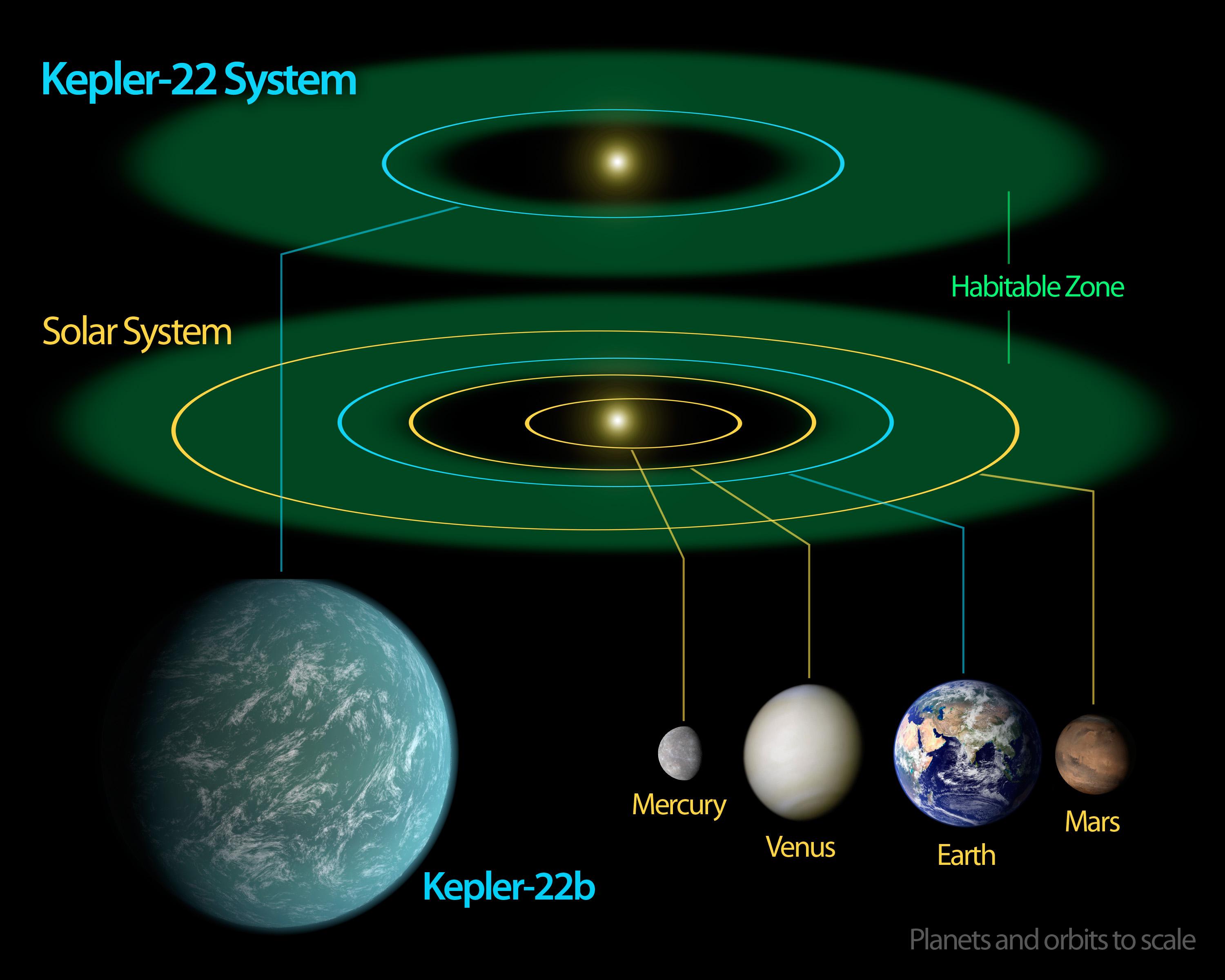Today, we are going to explore a remarkable world that lies beyond our solar system: Kepler-22b. This planet is one of the first confirmed exoplanets in the habitable zone of its star, where liquid water could exist on its surface. But what is this world like? How far is it from us, and from its sun? And could it harbor life?
Kepler-22b orbits a star that is very similar to our own sun, but slightly smaller and cooler. The star is called Kepler-22, and it is located about 640 light-years away from Earth in the constellation of Cygnus, the swan. That means that the light we see from this star today left it when Europe was in the last throes of the Middle Ages. To travel there with our current technology would take millions of years.
The planet itself is about twice the size of Earth, but its mass and composition are unknown. It could be a rocky world like ours, or a water world covered in a global ocean, or even a gas giant with no solid surface at all. The only way to find out for sure is to observe it more closely with future telescopes.
Kepler-22b takes about 290 days to complete one orbit around its star, which is about the same as our year. Its distance from its star is a little less than the Earth is from the Sun. And it receives about the same amount of sunlight that Earth does, making this a promising place for life as we know it.
But there is a catch: Kepler-22b may not have a stable climate like Earth does. Astronomers have noticed that this planet moves in a highly inclined orbit, roughly 90 degrees from the orbits of the other planets. If it runs out to have a highly elliptical orbit as well, then this could create extreme temperature differences between day and night, and possibly strong winds and storms. However, if Kepler-22b has a thick atmosphere or a large moon, then it could have a more moderate rotation and seasons.
The question of life on Kepler-22b is still open, there is so much we don’t know. If it has liquid water on its surface, it could be a potential harbor for living organisms. But water alone is not enough: life also needs energy, nutrients, and protection from harmful radiation. We do not know if Kepler-22b has any of these characteristics, or if it is compatible with our form of life.
Kepler-22b is a fascinating example of the diversity and wonder of the cosmos. It challenges us to imagine what other worlds may exist out there, and what forms of life may inhabit them. It also reminds us of how precious and unique our own planet is, and how much we have to learn about it and ourselves.

